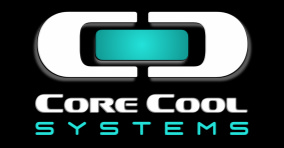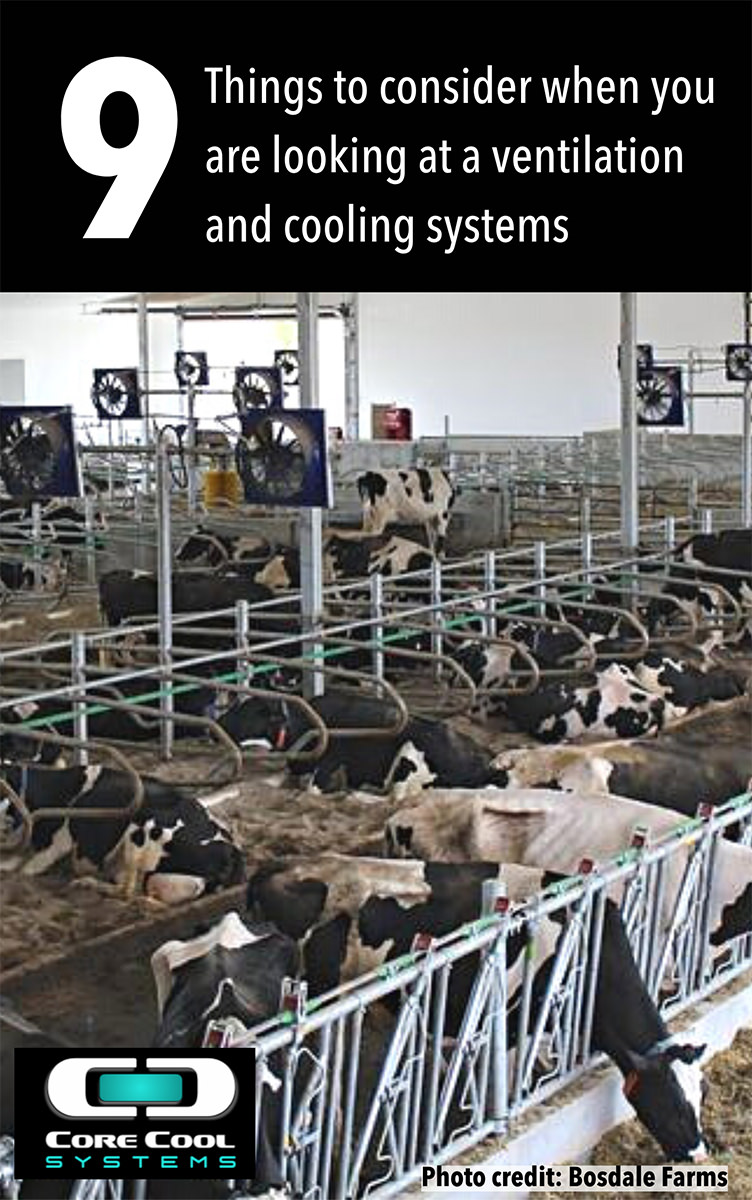
Bunk Cooling is just as important as stall cooling.
On a hot, humid day, we don't want to eat, and neither do our cows. There is nothing more frustrating than throwing away huge piles of uneaten feed. It is expensive and heartbreaking because we know how much work went into making that feed. We also know that as Dry Matter Intake goes down so does milk production. Double whammy in the pocket book.
Cows change their feeding behaviour as temperatures and the humidity rise. While most of us can skip a lunch or two without any real consequences, high-producing dairy cows shouldn't miss a "meal." To maintain peak performance, cows have to keep eating.
In warmer months, the bunk/feed alley area can be sweltering and overcrowded. The cows stand and pant and avoid eating until the cooler hours of the night. Then they gorge themselves, eating until they are overfull. This is called "Slug Feeding" and can significantly impact milk components and pH levels in the rumen.
"Sub-acute rumen acidosis (SARA) occurs when the rumen pH drops below the "normal" levels for extended periods of time. A normal rumen pH typically falls in the 6.0 to 6.4 range. The exact pH point for the onset of SARA varies depending on which study you look at, but it typically appears when pH drops below 5.8 to 6.0 for an extended time. Rumen pH will drop under 6.0 after a meal is consumed but normally rebounds quickly. During a SARA event, the pH drop is significantly greater, and the amount of time the cow has a low rumen pH is extended. SARA can be induced by slug feeding, sorting against the fibre portion of the diet, delays in feed delivery or abrupt changes in eating patterns, which are all common during heat stress. When more animals in a herd experience multiple SARA events, the overall performance of the herd will decline."
Dairy cows housed in barns typically spend 4 to 6 hours per day eating. Ideally, this time is divided into 9 to 14 separate meals or feeding sessions, very much like grazing in the fields. Multiple bunk visits daily are the behaviour you want because the goal is to get cows to eat more frequent, smaller meals throughout the day. These small meals promote better pH balance within the rumen than when cows wait till the cooler hours of the night and then gorge themselves over full. Remember how you feel after stuffing yourself on Christmas dinner! Never a good feeling.
When cows Slug feed, it disrupts rumen pH balance and leads to milk fat depression and loss of production. "The decreased milk components from SARA carry a noteworthy financial drain. Conservatively, it's estimated that SARA can cost dairy farmers $1.12/day/cow. That's $1,120 every day for a 1,000-cow herd."
Sub-acute ruminal acidosis (SARA) is one of the most important metabolic diseases in the dairy industry. It impairs cow performance and health even in a well-managed and high-yielding dairy herd. There are animal welfare concerns because of lameness and laminitis, which significantly impact cow comfort and general well-being. Cows in early lactation, transition cows, and cows fed with rapidly fermentable low fibre grass are at the highest risk to SARA.
SARA has diverse and complex consequences, including feed intake depression, fluctuations in feed intake, reduced diet digestibility, reduced milk yield, reduced milk fat percent, gastrointestinal damage, liver abscesses, and lameness. Increases in veterinary visits and costs add up and can impact the profitability of an operation.
A dairy farmer from Titusville, Pennsylvania, had this to say about the importance of bunk cooling.
"Bunk cooling is crucial to us because it reduces SLUG feeding. When cows wait till the ambient temperature cools down before going to the bunk, they eat themselves past full. Digestion of the large quantity of starch and sugar by rumen microbes at one time caused a drop in rumen pH. Cows develop ruminal acidosis, which hurts rumen health and digestion. Milk production and composition are affected. Digestion of starch produces glucose and propionic acid, which increases the risk of acidosis.
With the Core Cool system in both the beds and the bunk, cows eat in cool comfort and go back to rest and ruminate in cool comfort. Slug feeding side effects are not an issue. The cows are eating throughout the day, and components stay steady, and production is maintained regardless of heat events."
The new Core Cool Series offers bunk cooling using a fraction of the water other systems use. It provides variable speed cooling 365 days a year. Your cows can "graze" feed when and where they want to. During the warmer months, the system will provide evaporative cooling using a timed, ultra-fine droplet. This droplet acts as an imitation sweat to cool the blood and maintain core body temperature. This fully automated, precise system cools cows as effectively as bunk line soakers but uses a fraction of the water. Studies by Dr. John Bernard have proven that Core Cool's low-volume, low-pressure system offers the same cooling benefits as high-volume, high-pressure systems.
Providing cows with consistency is the key to success. The Core Cool Series delivers a consistent cool feeling to cows by maintaining core body temperature. Cooling in their beds and at the bunk where we want cows spending the majority of their day.
Consistently Cool Cows are Core Cool Cows.
Article Sources
http://www.omafra.gov.on.ca/english/livestock/dairy/facts/03-031.htm
https://www.sciencedirect.com/science/article/pii/S2078152016300773
https://www.crystalyx.com/blog/managing-rumen-health-in-dairy-cattle-and-beef-feedlot-cattle-during-heat-stress/
https://www.wisfarmer.com/story/opinion/editorials/2021/05/21/rev-up-your-cows-rumen-prevent-sara-during-heat-stress/5209881001/
Share: https://www.corecoolsystems.com/blog/Blog17/Bunk-Cooling-is-just-as-important-as-stall-cooling

